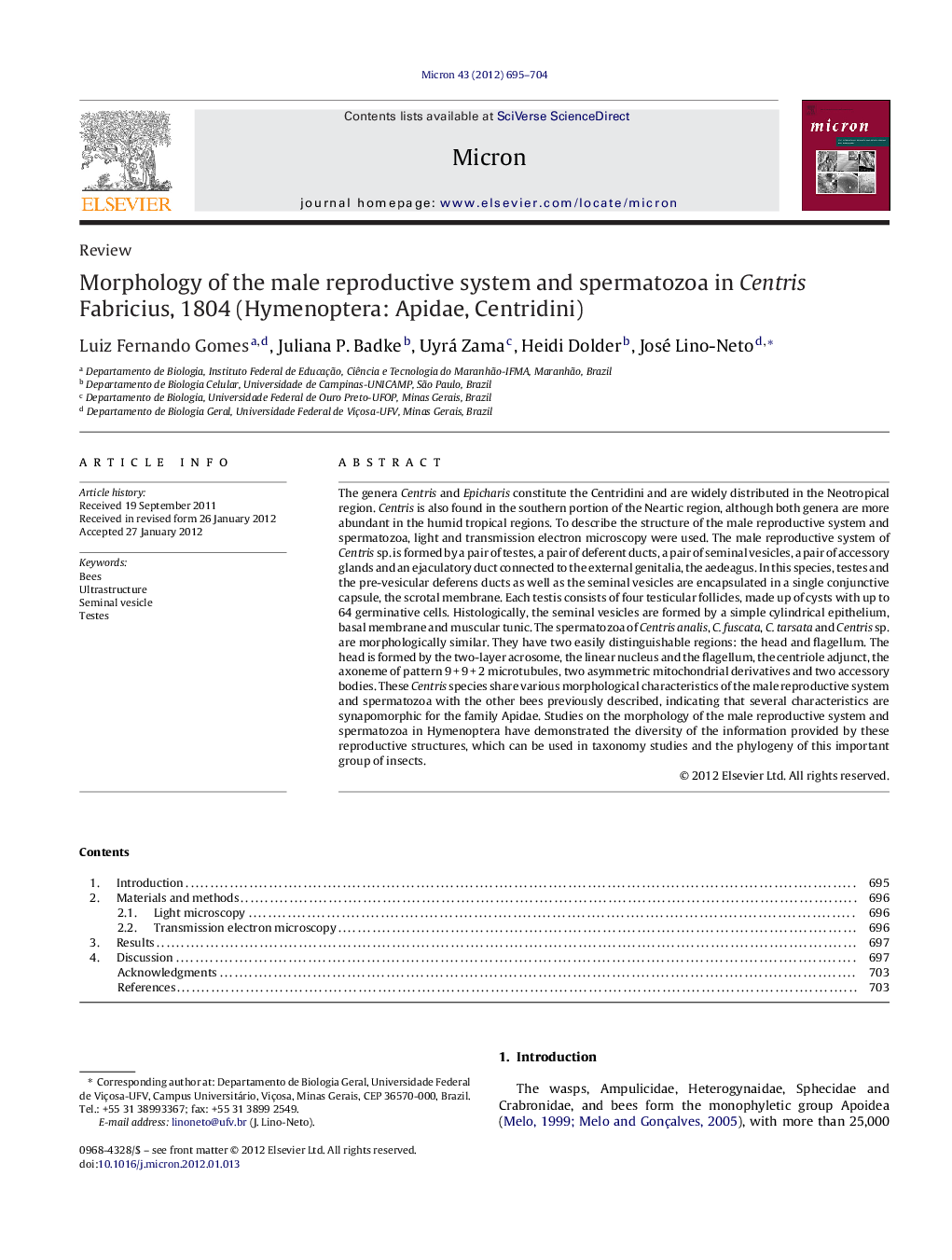| کد مقاله | کد نشریه | سال انتشار | مقاله انگلیسی | نسخه تمام متن |
|---|---|---|---|---|
| 1589263 | 1001983 | 2012 | 10 صفحه PDF | دانلود رایگان |

The genera Centris and Epicharis constitute the Centridini and are widely distributed in the Neotropical region. Centris is also found in the southern portion of the Neartic region, although both genera are more abundant in the humid tropical regions. To describe the structure of the male reproductive system and spermatozoa, light and transmission electron microscopy were used. The male reproductive system of Centris sp. is formed by a pair of testes, a pair of deferent ducts, a pair of seminal vesicles, a pair of accessory glands and an ejaculatory duct connected to the external genitalia, the aedeagus. In this species, testes and the pre-vesicular deferens ducts as well as the seminal vesicles are encapsulated in a single conjunctive capsule, the scrotal membrane. Each testis consists of four testicular follicles, made up of cysts with up to 64 germinative cells. Histologically, the seminal vesicles are formed by a simple cylindrical epithelium, basal membrane and muscular tunic. The spermatozoa of Centris analis, C. fuscata, C. tarsata and Centris sp. are morphologically similar. They have two easily distinguishable regions: the head and flagellum. The head is formed by the two-layer acrosome, the linear nucleus and the flagellum, the centriole adjunct, the axoneme of pattern 9 + 9 + 2 microtubules, two asymmetric mitochondrial derivatives and two accessory bodies. These Centris species share various morphological characteristics of the male reproductive system and spermatozoa with the other bees previously described, indicating that several characteristics are synapomorphic for the family Apidae. Studies on the morphology of the male reproductive system and spermatozoa in Hymenoptera have demonstrated the diversity of the information provided by these reproductive structures, which can be used in taxonomy studies and the phylogeny of this important group of insects.
► Ultrastructure of spermatozoa from four species of Centris was described.
► Ultrastructure of seminal vesicle from four species of Centris was described.
► Information obtained from the spermatozoa can be used for systematic studies.
Journal: Micron - Volume 43, Issue 6, June 2012, Pages 695–704